The old Swede Bend Baptist meeting house
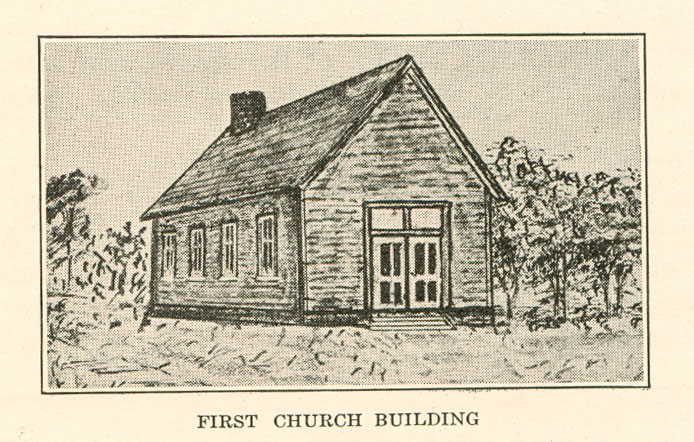
All the immigrant Swedes who came to Iowa were baptised and confirmed Lutherans from Sweden. Some were not happy with the state church either because it intruded on their lives or because it fell short of their churchly ideals. We have mentioned L.P.Esbjörn who brought a group to Andover, Illinois, where he found Swedish Methodists (and Bishop Hill Janssonites, upon whose disillusionment the Methodists were feeding). This movement spilled over into the New Sweden, Iowa, settlement, and up the Des Moines river to Swede Point and Swede Bend. There was in fact, a "Swedish Methodist pipeline" which began at O.G. Hedström's Bethel Ship Wesley in New York harbor and ran with astounding efficiency up the Erie Canal, through the Great Lakes, from Chicago down the Illinois river to LaSalle-Peru, and finally overland to brother Jonas Hedström's stronghold at Victoria, Illinois. It ultimately ran up the Mississippi and Des Moines river.
Esbjörn's plea for Lutheran reinforcements was soon answered by a group of Hälsingland devouts, variously called Hedbergians for the regional leader who may have filled a vacuum which Jansson left, or "old books people", for objecting to new materials emanating from state church presses. The reason we know much about this group is that it included the young Eric Norelius, who became Esbjörn's protoge and stalwart of the Augustana Lutheran Synod in America, and who wrote copiously and passionately about these times.
They traveled down the same Swedish Methodist pipeline, met all the "usual suspects" along the way, (G. Hedström, Erland Carlson, G. Unonius) and ended up with Esbjörn. What Norelius was to lament his whole life long, was that his band unknowingly brought more ammunition to the Swedish Baptist army in America than any other vehicle before or since. They had selected for their leader and shepherd on the journey a man that would become one of three leading Baptist activists on the frontier; Gustaf Palmquist.
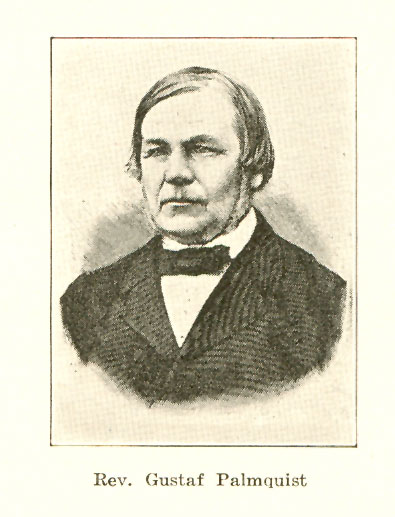
When Palmquist made his visit to Swede Bend in 1852-3, he was acting as an aide to Esbjörn in the mission to Iowa's Lutherans. In 1854 he was assigned to Galesburg, where a church building was being contested for by Hedström and Esbjörn forces, with Esbjörn currently winning. There he attended a revival meeting in the American Baptist church conducted by a Rev. Barry, was immersed and became forever a Swedish Baptist. Reportedly part of the same revival were the Stjärnström brothers, who would become pillars among the Swede Bend Baptists.
It was no momentary lapse. The state churches' iron grip on the sacraments was causing many devout Swedes to turn to Luther's more populist teachings regarding the faith. A few of them were impressed enough in encounters with the German Brethren to follow their practice of rebaptism. In the new land of America, newly freed from mandatory infant baptism, the option of waiting for the time of conversion to administer believer's baptism found strong appeal. As we know, Norelius' own brother Anders, who was also in his immigrant group, became a Baptist pastor and immersed their parents as well. Anders Norelius was the first pastor of the Swede Bend Baptist congregation. This is the reason for this long introductory account.
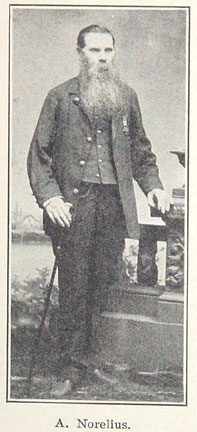
Anders Norelius in later years
In L.J. Ahlström's "Swedish Baptist Work in Iowa", 1933, we read about Swede Bend:
"...Palmquist went down to Burlington and sat in the council that ordained (A) Norelius, June 29. It is very likely that he immediately after this set out for the west. Palmquist and the Star (Stjärnström) brothers had first met in the great revival in Galesburg, 1852, had labored together in Rock Island and we can readily understand what a happy meeting they now had on the east bank of the beautiful Des Moines. About the revival that followed C.J. Star never tired of telling. He told the writer about it with real joy, nearly thirty years afterward.
As the revival progressed Palmquist sent for Mr. A. Norelius, who was in New Sweden, to come to his assistance and he arrived on August 11. Soon candidates for baptism appeared and on August 28, 1856, a church was organized of fifteen members: Peter Star, C.J. Star, Mrs. C.J. Star, J.F. Carlson, Mrs. J.F. Carlson, John Vedin, Mrs. John Vedin, John Holmquist, Louis Swedlund, Mrs. Louis Swedlund, John Swenson, Mrs. John Swenson, Charley Carlson and Emily Swenson." -Ahlström
The Carlsons had a log cabin overlooking the river, which at times served as the meeting place for the congregation. Anders Norelius boarded with the Anders Jonsons in their log cabin and the group was said to meet in a log schoolhouse. The township maps of the period contain most of the above family names among the farms of Swede Bend.
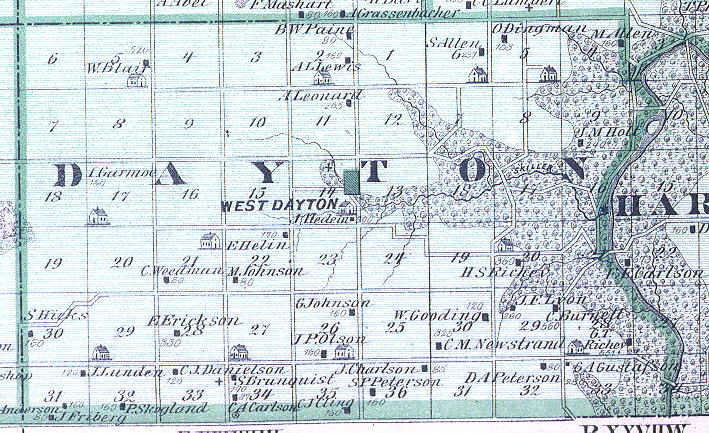
An early map showing the Carlson's site in section #21 (just below the large letter "H")
Note the name "West Dayton" - may we assume that "East Dayton"
was one of those landings that vanished with river traffic?
Norelius moved on after a couple of years, leaving the group pastorless for two further years. Then came a minister whose name may be familiar: L.L. Frisk. Of Frisk, the even-handed Baptist historian A. Olson has this to say:
"...Wiberg, Palmquist, and Nilsson all believed Chicago to be a strategic center for Swedish Baptist work. But they also seemed to fear that Frisk would not measure up to the great demands and opportunities of the field, for he was too easy-going, shiftless, and afraid of sacrifices and hard work." -A. Olson
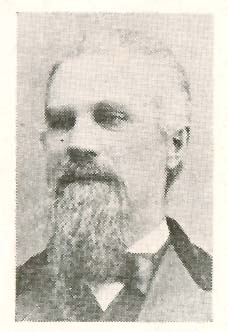
L.L. Frisk: pioneer with varied reviews
Frisk came from the family of the Dean of Gävle cathedral in Sweden. Why he was so ill thought of by his peers may have had to do with his being "upper class." He is later found as pastor of the Stromsburg Mission church. His later life was among the Swedish Baptists at Moline. For now, he is in the very "demanding" field of Swede Bend, where it is observed that, since he was fluent in English, he was able to extend his ministry to other local groups. It is hard to imagine that one such as Frisk could think of a move from Chicago to Swede Bend as other than an exile.

Our "working map" of Swede Bend, east section
(the "Union Church" on the right was probably not Swedish)
But the Stjärnström (Star) brothers so central to the story, were looking westward by 1867. Peter, who seems to be a special source for Ahlström's story, travels westward from Des Moines in the auspicious company of Capt. R. Jeanson, to survey land opportunities in western Iowa. Most interestingly, they are hosted in Des Moines by the Hultman family, which would figure prominently in the Covenant story down in the Essex / Red Oak area and included pastors F.O. Hultman, H. Hultman, and J.A. Hultman, "the Sunshine Singer."
Then they set off across the plains. Waypoints Exira, Magnolia, Monona, Denison and Carroll are names that still are familiar to western Iowans. Dale City and Bar Grove are more obscure. We can presume that their course took them to just a few miles north of where this account is now being written in the town of Walnut. Capt. Jeanson is legendary among Swedish Baptists for ventures such as this. He was one of the "land agents" which we have come to look for in the immigrant story, and also was a minister and benefactor to his branch of the church. On the banks of the Missouri they see the Indian school on the Nebraska side, and interact with some of the natives.

The illustrious Captain R.E. Jeanson
In northeast Monona county, Jeanson sees prospects for a settlement he intends to name Göteborg; one of those visions that did not become reality. In fact, it is the community of Kiron (and Arthur) that will become Swedish Baptist centers near here, and the Star brothers will be among the first on the scene. Another family, the Andersons, will be the forebears of Lorraine Lovain who spent her last years in Arthur, and in whose home we first saw the book by Ahlström upon which we draw so much. She employed the apt term "roots" in her own book on this settlement, and we cite this as a prime example of the way in which these roots intertwine. Quite a number of Swede Bend Baptists accompanied the Stars to Crawford county in 1868; they were sorely missed.
Following Frisk, Ahlström lists: N.J. Rundquist, C. Wallberg, C.P. Frödig, C.J. Johanson, and then Frisk returns for the years 1874-5. In 1870 two acres were purchased and a meeting house was built to which the Iowa Conference was invited for its dedicatory meeting. It would seem this is the site about 1-2 miles down the road east from the Methodist / Mission church. (see map) Next, a "parsonage" measuring 15 x 20 feet was moved to the site from Erick Hanson's. This consisted of two rooms, which Ahlström remembers occupying as a guest! Incredibly, a lean-to addition to this modest edifice provided quarters for the "janitor's family."
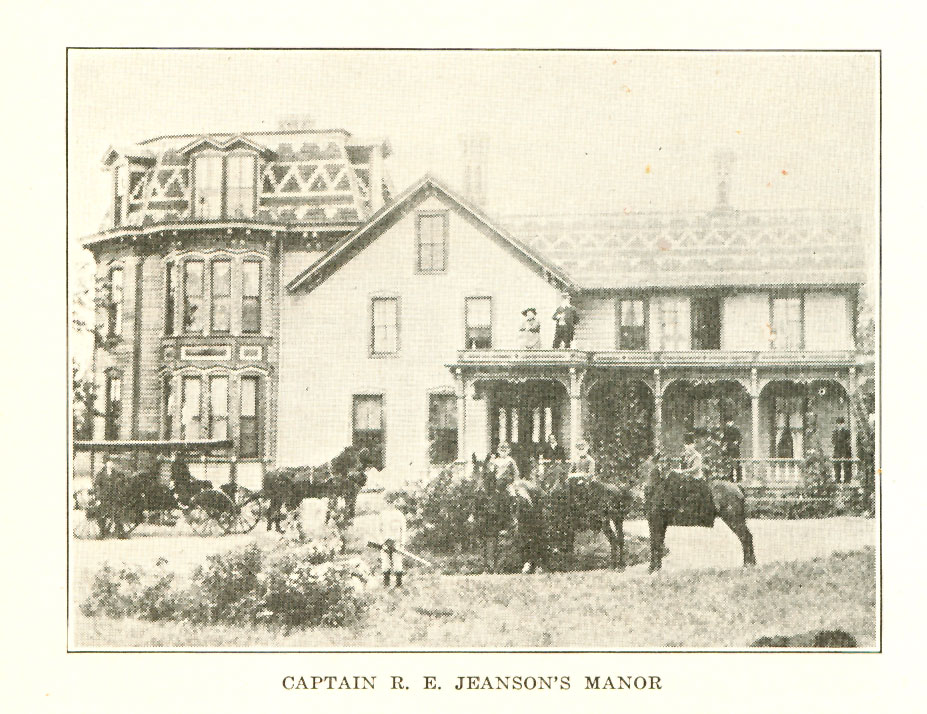
By contrast, the lifestyle of the land agents
Jeanson's place up in Kossuth county
Then, in 1877, something really interesting happens.
Those with the endurance to have read all of our stories, know that Fredrik Franson seems to turn up wherever we go. (see "Three Swedish Churchmen from Saunders County, Nebraska", in particular) In 1877 Franson comes to Swede Bend. He, with a soloist (in the Moody - Sankey style), holds a series of union revival meetings. According to all reports, the meetings are very effective and the Methodist and Baptist churches gain many members. We will defer the question of why the Lutheran and Mission churches were not so benefitted till later.
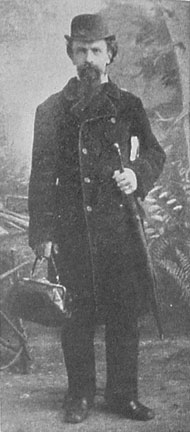
Fredrik Franson
What is of interest here, is that the historians find themselves momentarily looking at blank space in the Baptist records. We can forgive them for not being familiar with the program of Franson. He is the adversary of denominations, the proponent of the early end of history, and counsels churches to abandon all organization and record-keeping as irrelevant and detracting from the urgent task of soul-winning. Apparently the Baptists did just that. Ahlström's report is:
"In Feb., 1877, a series of union meetings were conducted by Rev. F. Franson of Estina, Neb. Many converts were received into the Methodist and Baptist churches. A season of inactivity followed. ( ! -ed) In 1878 the church reported 33 members. Pastors John Ring and Marcus Hansen held some meetings here and in a published letter Hansen wrote in January, 1879 he says: 'we reorganized the church at Swede Bend, which had been dissolved.' (!! -ed) The church had never been dissolved, but there had been a great deal of internal trouble." -Ahlström
Franson could weave a spell among people that had just these effects. Many were the congregations that would look back on his visits as "trouble." Evidently the Swede Bend Baptists had simply thrown out the books!
Let us take up the Ahlström roster of pastors: E.W. Ericson, C.A. Sandvall, 1881, Sven Morein, 1883, C.W. Broms, 1884. Then follows a lapse of years in which the little Baptist chapel and its pastor's cottage stand empty.
Then, in 1891, something else really interesting happens.
Miss Betsy Anderson (sometimes spelled Anderzon) is a Swedish singing evangelist. We are eager to know more about Miss Anderson, as her name keeps cropping up in Swedish Baptist circles as far away as California. There is evidence that Swede Bend might be her home base. Her appearance makes us think of Franson's advocacy of "prophesying daughters", an advocacy that might have both helped and harmed the cause of women's ministry.
Betsy Anderson held a series of meetings in 1891, when "many confessed conversion." Next comes a young pastor, Olaf Lind (not Lindh) who hosts another visit from Miss Anderson and Rev. C. Asplund. Again, conversions follow with baptisms in the Des Moines river. Then, the name of Betsy Anderson returns to obscurity.
Next come the pastorates of A.A. Holmgren, A.B. Nordberg, L.L. Lundstrom and A.O. Arnquist. During Holmgren's term, about 1895, the little church and even more modest parsonage were moved up to Stratford along the railroad line. To fill out the 1933 roster, we include C.G. Bengston, Andrew Johnson, Robert Larson, Albin Holmer, Victor Sword, J.A. Nordstrom, G.P. Hasselblad, C.J. Ackerman and A.E. Applequist.

By this time a new church has been built in Stratford, one that must have filled the Swede Bend Baptists with pride, as it compared well with the churches of the Lutherans and Methodists. The small structure to the rear must be the old parsonage, which reminded them of humbler days. On our visit, the site was pointed out, but nothing remains of these buildings themselves. Against the odds which we have here enumerated, it must be said that they have not only endured, but prevailed.
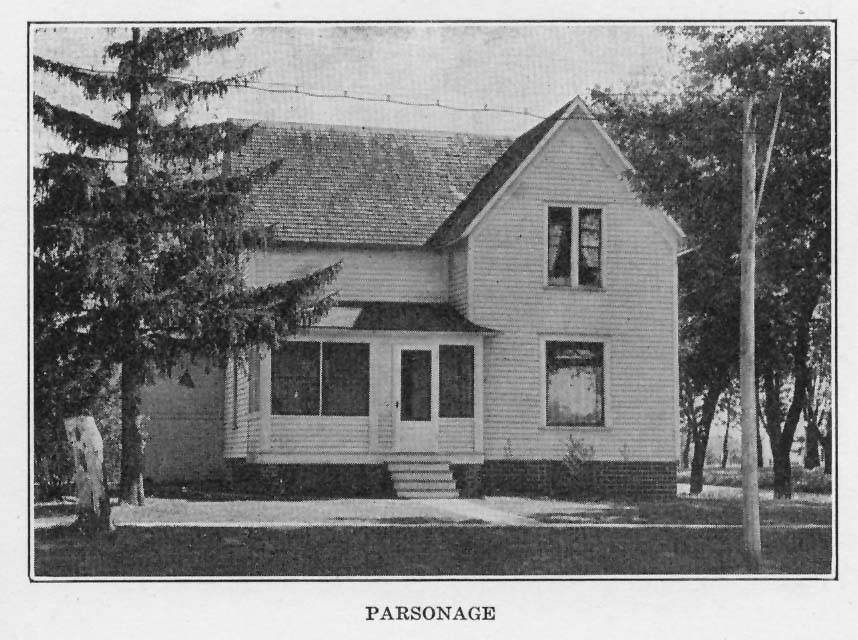
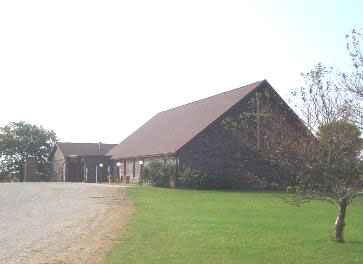
Again,the Baptist General Conference church in Stratford